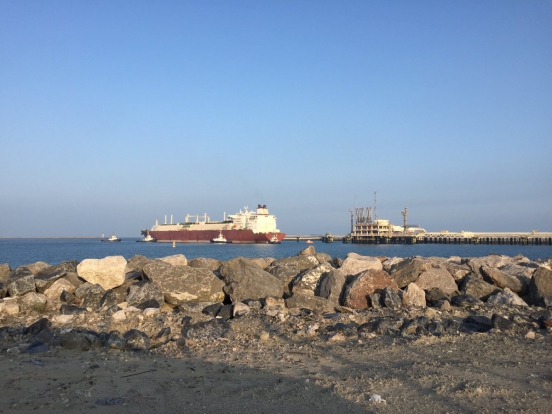Update: Dunkirk LNG Only Slightly Busier
Dunkirk LNG terminal tweeted April 10 that its third commercial cargo arrived from Qatar earlier this morning aboard the tanker Umm Al Amad. It follows the arrival of the second commercial cargo three days earlier, but still means the terminal has operated at only 9% capacity to date in 2017.
The original report published April 7 follows:
The Dunkirk LNG terminal in northern France tweeted April 7 that it received its second commercial cargo earlier this morning, aboard Fraiha, implying only single-digit utilisation of Europe's newest import terminal so far this year.
Dunkirk received its first commercial cargo January 23, under a long-term supply agreement between Qatar's RasGas 3 and EDF, aboard Murwab.
If the April 7 arrival is indeed only the second cargo so far this year, then NGW calculates that the 13bn m3/yr Dunkirk terminal has operated at just 6% of its capacity to date in 2017.
The terminal is owned and operated by Dunkerque LNG, 65%-owned by French power giant EDF, 25% by Belgian gas grid Fluxys and 10% by Total. It is operated by Gaz Opale, 51%-owned by Dunkerque LNG and 49% by Fluxys. EDF and Total are understood to have booked much of its capacity.
Both Murwab and Fraiha deliver cargoes from Qatar, so it's likely that the second cargo was supplied under the same arrangement. The terminal was declared fully commissioned on January 1, having received three commissioning cargoes since it entered service in mid-2016.

Fraiha arriving at Dunkirk on April 7 (Photo credit: Dunkerque LNG/Twitter)
According to the International Gas Union's 2017 World LNG Report published earlier this week, French LNG terminals had an average utilisation rate of 36% as of January 2017. The report said that global average was 43% in 2016. Dunkirk is France's 4th LNG import terminal.
EDF's arrangement with RasGas 3, signed June 2016, is for up to 2mn mt/yr starting 2017, but the supplier can opt to deliver less if other markets are more lucrative, and this is believed to be what's happening. Spot gas prices in Europe are back to low levels, after a spike three months ago, with day-ahead gas on April 7 at the northern French virtual hub, Peg Nord, trading at about $5/mn Btu.
Mark Smedley



